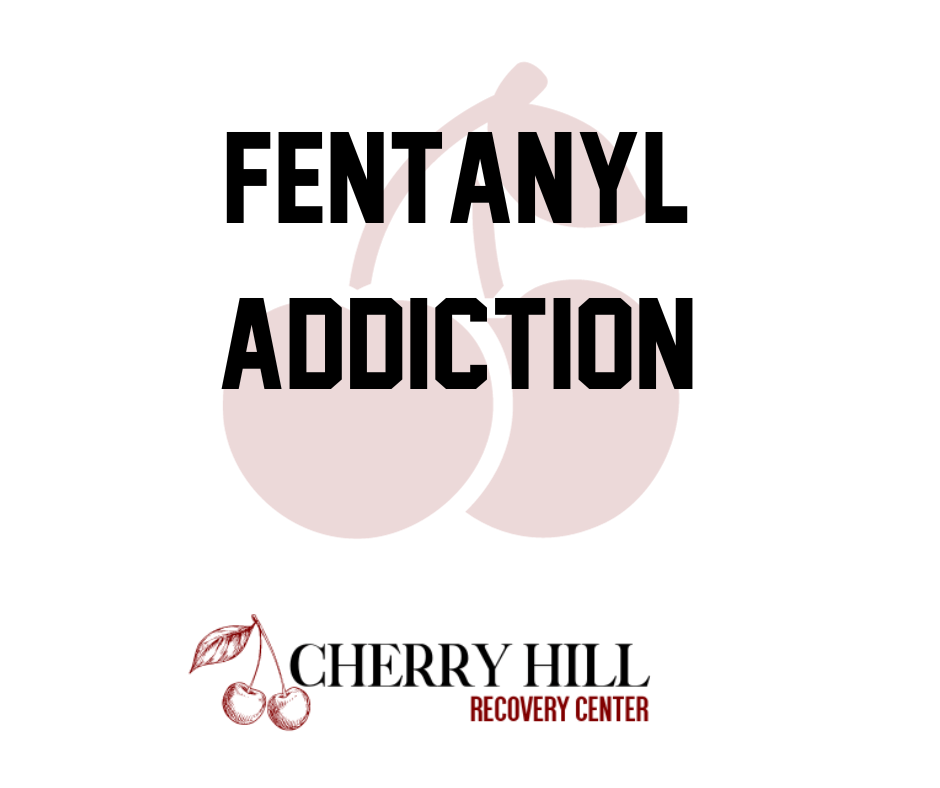
Unlocking the Layers of Understanding: Fentanyl Addiction and Opioid Awareness at Cherry Hill Recovery Center
Welcome to Cherry Hill Recovery Center, a sanctuary of knowledge and support. In our commitment to transparency and education, we delve deep into the complex landscape of fentanyl addiction and opioids. Join us as we unravel the intricacies of these substances, providing in-depth insights that empower individuals on their journey to recovery.
What is Fentanyl?
Decoding the Powerhouse: Fentanyl Unveiled
Fentanyl, a potent synthetic opioid, stands at the forefront of our discussions. Understand the origins, chemical composition, and the medical applications that distinguish fentanyl from other opioids. Our exploration goes beyond the surface, offering a comprehensive understanding of this formidable substance.
Rainbow Fentanyl: Myth or Reality?
The Spectrum of Colors: Debunking Rainbow Fentanyl
In recent times, the term “rainbow fentanyl” has emerged, raising concerns and sparking discussions. We dissect the reality behind this concept, separating fact from fiction and addressing the potential risks associated with the diverse range of substances that fall under this umbrella term.
Our Fentanyl Addiction Rehab Nearby
Fentanyl Side Effects: Unveiling the Impact
Beyond the High: Exploring Fentanyl Side Effects
The allure of fentanyl comes with a host of side effects that extend beyond the desired euphoria. Our guide provides a detailed examination of the physical, psychological, and long-term effects of fentanyl use, empowering individuals to make informed decisions about their well-being.
Fentanyl is a potent opioid medication prescribed for severe pain management, but it carries a range of side effects. It’s important to note that the misuse or abuse of fentanyl can significantly increase the risk and severity of these side effects. Here are common side effects associated with fentanyl use:
Respiratory Depression:
- Slowed or shallow breathing is a serious side effect and can be life-threatening, especially in high doses.
Sedation and Drowsiness:
- Fentanyl can cause significant drowsiness and sedation, affecting an individual’s ability to stay awake and alert.
Nausea and Vomiting:
- Gastrointestinal disturbances, including nausea and vomiting, are common side effects of fentanyl.
Constipation:
- Opioids, including fentanyl, can cause constipation, which may require additional medications or lifestyle changes to manage.
Confusion and Dizziness:
- Fentanyl can impair cognitive function, leading to confusion, dizziness, or difficulty concentrating.
Itching and Rash:
- Some individuals may experience itching or develop a rash as a skin reaction to fentanyl.
Dry Mouth:
- Opioids can cause dry mouth, which may contribute to other oral health issues.
Sweating:
- Excessive sweating, sometimes accompanied by clammy skin, can occur with fentanyl use.
Headache:
- Headaches may occur as a side effect of fentanyl.
Muscle Rigidity:
- Fentanyl use may lead to muscle stiffness or rigidity.
Recognizing the Signs: Fentanyl Overdose Symptoms
The Critical Moment: Identifying Fentanyl Overdose Symptoms
Fentanyl overdose is a grave concern. Arm yourself with knowledge as we delve into the distinct symptoms that signal a potential overdose. Learn the importance of swift action, the role of naloxone (Narcan), and the urgency of seeking professional help.
Fentanyl is an extremely potent opioid, and an overdose can be life-threatening. Recognizing the symptoms of a fentanyl overdose is crucial for seeking immediate medical attention. Here are common fentanyl overdose symptoms:
Respiratory Depression:
- Slow or shallow breathing is a hallmark sign of a fentanyl overdose.
- In severe cases, respiratory arrest may occur, leading to a complete cessation of breathing.
Extreme Drowsiness or Unresponsiveness:
- Overdose may cause extreme sedation, leading to unconsciousness or difficulty arousing the individual.
Pinpoint Pupils:
- Constricted or pinpoint pupils are a classic sign of opioid intoxication, including fentanyl.
Confusion or Mental Impairment:
- Individuals experiencing a fentanyl overdose may exhibit confusion, disorientation, or an inability to stay awake.
Clammy Skin and Sweating:
- Skin that feels clammy or excessively sweaty may indicate a physiological response to the overdose.
Limpness or Weakness:
- Muscle limpness or weakness, often referred to as “nodding off,” can occur during a fentanyl overdose.
Cyanosis:
- Bluish or purplish discoloration of the lips, face, or extremities indicates a lack of oxygen in the blood and is a severe sign of overdose.
Gurgling Sounds:
- Gurgling or choking sounds may be heard as the individual struggles to breathe.
If you suspect someone is experiencing a fentanyl overdose, it is crucial to seek emergency medical assistance immediately. Additionally, administering naloxone (Narcan), if available, can reverse the effects of opioid overdose temporarily and provide a window for medical professionals to intervene.
How Long Does Fentanyl Stay in Your System?
Tracing the Timeline: Understanding Fentanyl’s Presence
Individuals often wonder about the duration of fentanyl’s presence in the body. Our comprehensive guide outlines the factors influencing the stay of fentanyl in the system, shedding light on the intricacies of detection windows and the importance of tailored treatment plans.
The duration that fentanyl stays in your system can vary based on several factors, including individual differences, dosage, frequency of use, metabolism, and the type of drug test being conducted. Here’s a general guide to help you understand the detection window for fentanyl:
Urine Test:
- Fentanyl is typically detectable in urine for about 1-3 days after use.
- Chronic or heavy use may extend the detection window to 7 days or more.
Blood Test:
- Fentanyl can be detected in blood for approximately 12-24 hours post-use.
- Blood tests are often used in acute overdose situations.
Saliva Test:
- Saliva tests can detect fentanyl for a shorter duration, usually up to 1-2 days.
Hair Follicle Test:
- Fentanyl may be detectable in hair follicles for a more extended period, up to 90 days or even longer.
- Hair tests are less common and are typically used for a historical overview of drug use.
What Does Fentanyl Look Like?
The Camouflage Game: Identifying Fentanyl’s Appearance
Fentanyl doesn’t always come in a recognizable form. We demystify the appearance of fentanyl, discussing the variations, disguises, and the challenges associated with identifying this potent opioid, especially in the context of pressed pills circulating in the illicit market.
Here are the common forms of fentanyl and their appearances:
Pharmaceutical Formulations:
- Legitimate fentanyl prescribed by healthcare professionals often comes in the form of patches, lozenges (also known as “lollipops”), or injectable solutions.
- Fentanyl patches are typically transdermal patches that deliver the medication slowly through the skin.
Illicitly Manufactured Fentanyl (IMF):
- Illicitly manufactured fentanyl may be produced in powder or crystal form.
- The powder may range in color from white to off-white, and its consistency can be fine or coarse.
Counterfeit Pills:
- Fentanyl is sometimes pressed into counterfeit pills, which are made to resemble other medications like oxycodone or Xanax.
- These counterfeit pills can vary in color, size, and markings, making them difficult to distinguish from legitimate medications.
If you are addicted to fentanyl get help now!
Narcan: A Lifesaving Intervention
The Antidote: Narcan’s Role in Overdose Reversal
Narcan (naloxone) is a crucial tool in the fight against opioid overdoses. Gain a profound understanding of how Narcan works, its availability, and the steps to administer this lifesaving intervention. We empower individuals and communities to be proactive in preventing opioid-related fatalities.
Naloxone, commonly known by the brand name Narcan, is a life-saving medication used to rapidly reverse opioid overdose, including fentanyl overdose. Here’s a step-by-step guide on how to use Narcan to reverse a fentanyl overdose:
1. Recognize the Signs of Overdose:
- Identify symptoms of opioid overdose, including slow or shallow breathing, unconsciousness, and pinpoint pupils.
2. Call Emergency Services:
- Before administering Narcan, call emergency services (911 in the United States) to ensure professional medical assistance is on the way.
3. Ensure Safety:
- Ensure your safety and the safety of others at the scene. If possible, try to determine the presence of any other substances involved.
4. Assemble the Narcan Nasal Spray:
- Narcan is available as a nasal spray, making it easy to administer.
- Remove the Narcan nasal spray from its packaging.
5. Position the Person:
- Lay the person on their back.
- Tilt their head backward slightly to open the airway.
6. Administer Narcan Nasal Spray:
- Hold the Narcan nasal spray with your thumb on the bottom and two fingers on either side of the nozzle.
- Insert the nozzle into one nostril until your fingers touch the bottom of the person’s nose.
- Press the plunger firmly to release the dose into the nostril.
7. Administer Second Dose (if available):
- Narcan is often provided in a two-dose package. Administer a second dose in the opposite nostril if the person does not respond within 2-3 minutes or if symptoms return.
8. Observe and Monitor:
- Observe the person for signs of improvement, such as increased breathing or responsiveness.
- Continue to monitor the person until emergency medical help arrives.
9. Provide Rescue Breaths (if necessary):
- If the person is not breathing, providing rescue breaths may be necessary until emergency help arrives.
10. Follow Up:
- Even if the person responds to Narcan, seek emergency medical attention. The effects of Narcan are temporary, and the person may require further medical care.
Pressed Pills: Unveiling the Risks
A Dangerous Facade: The Dangers of Pressed Pills
Explore the risks associated with pressed pills, a growing concern in the opioid crisis. Our content goes beyond surface warnings, providing insights into the deceptive appearance, varying potency, and the potential dangers these counterfeit pills pose to individuals seeking relief from pain.
Pressed pills containing fentanyl pose significant dangers and contribute to the escalating opioid crisis. Here are some of the key risks and dangers associated with pressed pills containing fentanyl:
Potency Variability:
- Pressed pills are often produced in clandestine settings, leading to significant variability in the amount of fentanyl present in each pill.
- The lack of quality control means that individuals may unknowingly ingest a pill with a much higher dose of fentanyl than expected, increasing the risk of overdose.
Risk of Overdose:
- Fentanyl is an extremely potent opioid, and even a small amount can lead to overdose.
- Individuals who consume pressed pills with inconsistent fentanyl content are at heightened risk of experiencing overdose symptoms, including respiratory depression, loss of consciousness, and death.
Deceptive Appearance:
- Pressed pills are designed to resemble legitimate medications, making it challenging for individuals to distinguish them from authentic pharmaceuticals.
- The deceptive appearance increases the likelihood that individuals may inadvertently consume fentanyl, thinking they are using a different substance.
Mixing with Other Substances:
- Pressed pills may contain a combination of substances, including fentanyl and other drugs such as heroin, cocaine, or benzodiazepines.
- The unpredictable interactions between these substances further elevate the risk of adverse reactions and overdose.
Community Health Impact:
- The circulation of pressed pills with fentanyl has contributed to a surge in opioid-related overdoses, leading to significant public health challenges.
- First responders and healthcare systems face increased strain in responding to the rising number of overdose cases.
Challenge for Law Enforcement:
- The clandestine production of pressed pills poses challenges for law enforcement in identifying and intercepting the distribution of these substances.
- The ever-evolving nature of illicit drug markets makes it difficult to address this issue comprehensively.
Increased Fatalities:
- The potency of fentanyl in pressed pills has contributed to a higher incidence of fatal overdoses.
- Efforts to address this issue involve a combination of public awareness, harm reduction strategies, and law enforcement initiatives.
Opioid Insights: Percocet and Klonopin
Beyond Fentanyl: Navigating the Opioid Landscape
Percocet and Klonopin are prominent figures in the opioid family. We dissect their properties, applications, and the risks associated with their misuse. Our goal is to equip individuals with the knowledge needed to make informed decisions about pain management and mental health.
Naloxone: Understanding the Protector
Naloxone’s Crucial Role in Opioid Safety
Naloxone is a beacon of hope in the opioid crisis. We delve into the mechanisms of naloxone, its accessibility, and the importance of widespread distribution in preventing opioid-related fatalities. Education on naloxone empowers individuals and communities to take proactive steps towards safety.
Tranquilizers and Opioids: A Potent Combination
The Lethal Synergy: Tranquilizers in the Opioid Mix
Tranquilizers, when combined with opioids, can amplify risks. Our content explores the dangers of this lethal synergy, offering insights into the potential consequences of mixing substances and the importance of seeking professional guidance for individuals navigating pain management and mental health challenges.
At Cherry Hill Recovery Center, our content is more than information; it’s a lifeline for those seeking understanding, support, and a transformative journey towards recovery. As you navigate the complexities of fentanyl, opioids, and their intersections, know that Cherry Hill is not just a recovery center; it’s a partner in your pursuit of a healthier, fulfilling life.




